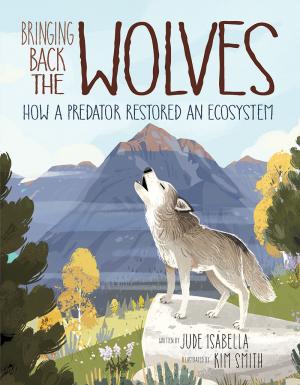
Bringing Back the Wolves
Bringing Back the Wolves is a beautifully illustrated book about the disappearance of the wolves from Yellowstone National Park. The book teaches us what happened to an ecosystem when the wolf, the top predator, disappeared from the food chain. This break in the food chain led to changes that transformed Yellowstone National Park for many years. We learn not only to appreciate wolves but also to become aware of our environment’s delicate balance. The beautiful illustrations of landscapes and animals will keep readers engaged, wondering what change will happen next. Compare the pictures at the beginning of the book that show the landscapes after the wolves disappeared and the pictures at the end of the book that show the transformed landscape when the wolves returned.
It all started in the 1800s when hunters were paid by the American government to get rid of threats to the cattle on ranches near Yellowstone National Park. These hunters did so well that by 1926 the gray wolf packs were gone. Over time the loss of these wolves caused the park’s ecosystem to be greatly affected. Not only were the other animals who were part of the food chain affected, but many plants were affected as well. The streams and the landscape changed. Finally people realized that something had to be done to fix this. In 1995 gray wolves were reintroduced to the park. The book explains how a healthy ecosystem was recreated as the wolves went about their business across the land.
Throughout the book there are colourful pictures of food chains that help explain how interconnected living things are. Biodiversity, ecosystems, habitats, food chains, the needs of living things and the importance of looking after our environment are taught in this book. The glossary at the back adds to how much students can learn from reading this book.
I highly recommend this book for anyone teaching habitats, which is part of the Grade 4 science curriculum, biodiversity, which is part of the Grade 6 science curriculum, or interactions in the environment, which is part of the Grade 7 science curriculum. It is a great book for anyone teaching about animals and the natural environment. There is even a lesson for students in the primary grades. Young children will see how important it is to protect the environment and the animals in it.
Jane Ranson is a member of the Limestone Teacher Local.